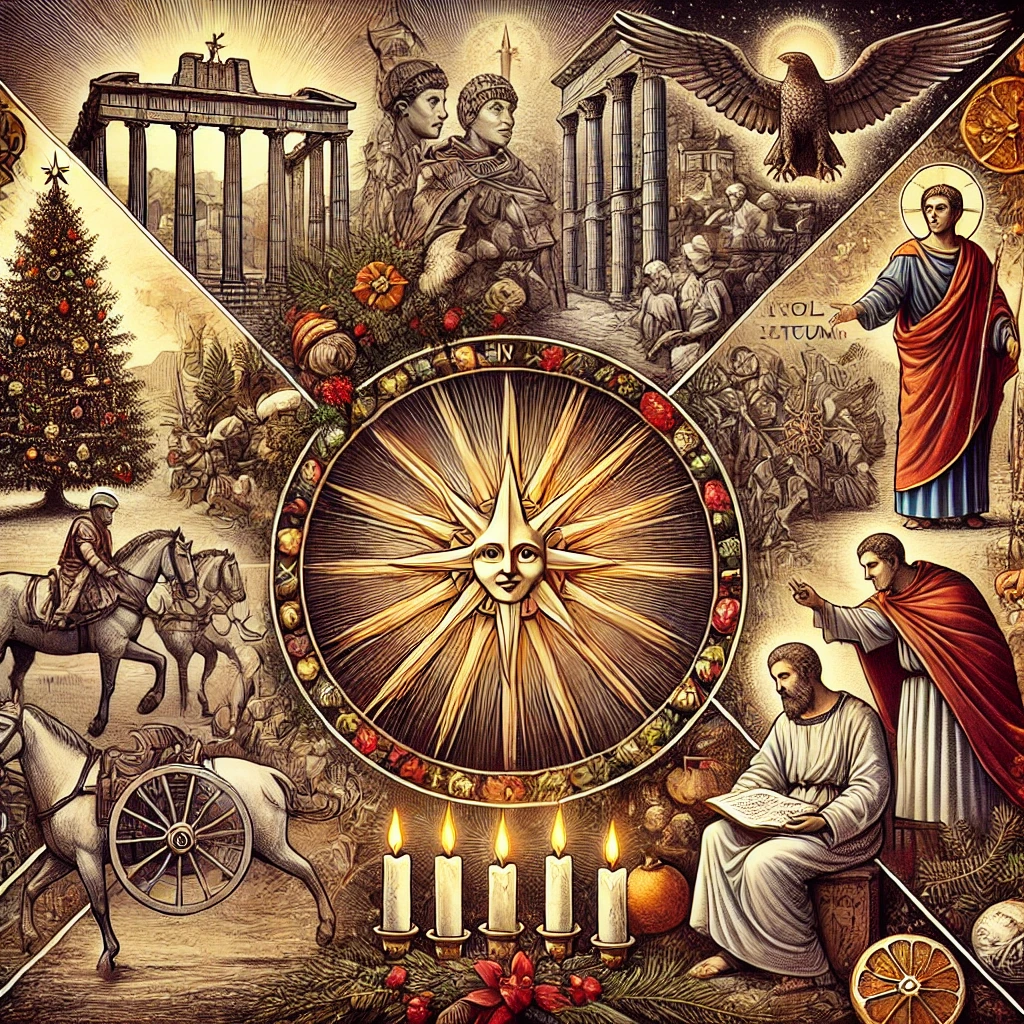
The Evolution of December 25 as Christmas: A Historical Journey
The date of December 25 is universally recognized as Christmas, a day celebrating the birth of Jesus Christ. However, this date’s establishment as Christmas Day is the result of a complex interplay of religious, cultural, and political influences that evolved over centuries. This article delves into the historical journey of how December 25 became associated with the nativity of Jesus and explores the layers of meaning and tradition that have shaped this significant date in the Christian calendar.

- Early Christianity and the Absence of a Nativity Date
The early Christian Church, in its formative years, did not emphasize the celebration of Jesus’ birth. Instead, the central focus of early Christian worship revolved around His crucifixion and resurrection. The New Testament offers no explicit date for Jesus’ birth, and the Gospels of Matthew and Luke, which provide nativity narratives, give no direct indication of the season or day.
In fact, early Christians celebrated major events such as Easter, which commemorated the resurrection, and Pentecost, marking the descent of the Holy Spirit. The lack of emphasis on Jesus’ birth during the first few centuries is significant, as it suggests that Christmas as we know it was a later development influenced by theological, social, and cultural factors.

- The Theological Quest for a Date
The absence of a birth date in the Bible did not stop early theologians and scholars from speculating about when Jesus might have been born. Various dates were proposed, including January 6, March 25, and April 2, reflecting differing traditions and interpretations.
One popular theory that influenced the eventual selection of December 25 revolves around the concept of integral age, a Jewish tradition suggesting that prophets died on the same day they were conceived. Early Christians calculated March 25 as the date of the Annunciation—when the angel Gabriel told Mary she would conceive Jesus. Adding nine months led to December 25 as the presumed date of Jesus’ birth.

- The Influence of Pagan Celebrations
Another critical factor in the adoption of December 25 as Christmas Day is the intersection with pre-existing pagan festivals. Before the Christianization of the Roman Empire, December 25 held significance in pagan traditions, particularly as the date of the winter solstice in the Julian calendar.
Saturnalia
The Roman festival of Saturnalia, celebrated from December 17 to December 23, was a time of feasting, gift-giving, and revelry in honor of the god Saturn. Although it did not directly overlap with December 25, the festive atmosphere and customs of Saturnalia may have influenced early Christmas traditions.
Dies Natalis Solis Invicti
December 25 was also observed as the Dies Natalis Solis Invicti (“Birthday of the Unconquered Sun”), a festival celebrating the Roman sun god Sol Invictus. Established by Emperor Aurelian in 274 CE, this celebration marked the sun’s “rebirth” following the winter solstice, symbolizing the gradual return of longer days.
For early Christians, the symbolism of light overcoming darkness aligned well with theological themes of Jesus as the “light of the world.” Adopting December 25 allowed the Church to provide a Christian alternative to these popular pagan festivities, easing the transition to Christianity in the Roman Empire.

- The Formal Adoption of December 25
The official recognition of December 25 as Christmas Day can be traced to the 4th century. During this time, the Roman Emperor Constantine played a pivotal role in promoting Christianity after his conversion. The Edict of Milan in 313 CE granted religious tolerance throughout the empire, allowing Christianity to flourish.
In 336 CE, the first recorded celebration of Christmas on December 25 occurred in Rome. Shortly afterward, Pope Julius I (reigned 337–352) is traditionally credited with formalizing this date, possibly to consolidate Christian practices and distinguish them from pagan traditions.
By the end of the 4th century, December 25 had gained widespread acceptance in the Western Church, although the Eastern Church continued to celebrate Jesus’ birth on January 6, a date that also commemorated the Epiphany.

- Regional Variations and the Spread of Christmas
As Christianity spread across Europe and beyond, the observance of December 25 as Christmas became more firmly established. However, regional variations in customs and traditions emerged, reflecting local cultures and pre-Christian practices.
The Eastern Church and January 6
In the Eastern Orthodox tradition, January 6—Epiphany—remains a major feast day, celebrating both the birth and baptism of Jesus. Over time, December 25 was adopted by many Eastern churches, although the Julian calendar used by some Orthodox Christians places Christmas on January 7 in the Gregorian calendar.
Germanic and Celtic Influences
In Northern Europe, the conversion of Germanic and Celtic peoples introduced elements of their winter solstice celebrations into Christmas customs. Practices such as decorating evergreen trees, lighting candles, and feasting became integral to Christmas, blending Christian theology with local traditions.

- Theological and Liturgical Significance
The choice of December 25 as Christmas Day was not merely a matter of convenience or syncretism. It also held deep theological significance for early Christians. The proximity of Christmas to the winter solstice reinforced the symbolism of Jesus as the “light of the world” (John 8:12) and the fulfillment of messianic prophecies.
In the Western Church, the Advent season emerged as a period of preparation for Christmas, reflecting themes of hope, anticipation, and the coming of Christ. The liturgical calendar also connected Christmas to other major feasts, such as Epiphany and Candlemas, creating a cohesive narrative of Jesus’ early life.
- The Globalization of Christmas
As Christianity spread through missionary work and colonization, the celebration of December 25 as Christmas became a global phenomenon. Each region incorporated its own customs, resulting in a rich tapestry of traditions.
The Reformation and Christmas
During the Protestant Reformation, some groups, such as the Puritans, rejected the celebration of Christmas, viewing it as unbiblical and excessively influenced by pagan customs. In England, Christmas was even banned for a time under Oliver Cromwell’s rule in the 17th century. However, the holiday eventually regained its popularity, particularly in Victorian England, where it was revitalized through literature, music, and the promotion of family-centered celebrations.
Modern Christmas
In the 19th and 20th centuries, Christmas underwent significant commercialization and secularization, particularly in Western countries. Figures such as Santa Claus and traditions like Christmas trees, gift-giving, and festive decorations became prominent, often overshadowing the religious aspects of the holiday.
Despite these changes, the spiritual core of Christmas—commemorating the birth of Jesus—remains central for millions of Christians worldwide.
- Conclusion
The establishment of December 25 as Christmas Day is a testament to the dynamic interplay of religious devotion, cultural adaptation, and historical circumstances. From its roots in early Christian theology to its intersection with pagan festivals and eventual global spread, the journey of December 25 reflects the enduring power of tradition and the ability of cultures to reshape and redefine their practices over time.
Today, Christmas continues to evolve, embodying diverse meanings and customs while serving as a time for reflection, joy, and unity. Whether celebrated as a sacred religious holiday or a festive cultural event, December 25 stands as a powerful symbol of hope and renewal, echoing the message of light that has resonated across centuries.



iouagi